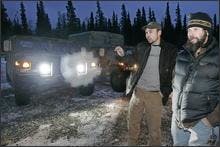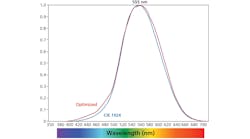DELTA JUNCTION, Alaska -- The Humvee's headlights shone incredibly bright, casting daylight clarity on a line of spruce trees, every needle standing out in stark contrast to the dark night of Alaska's interior. Next to the vehicle, the incandescent lights on another Humvee glowed like mere candles. It was time to study an emerging technology in one of the harshest places on earth, the Army's sprawling Cold Regions Test Center near Fort Greely.
Strange things happen when thermometers nose-dive to Alaska extremes. Metal can break, rubber can crack, motor oil can turn hard as a rock, human beings can freeze to death.
That's why the Army established the test center in 1949, to develop gear that can hold up in the coldest regions of the world. It was a response to World War II, when thousands of U.S. troops sustained cold-weather injuries, such as frostbite, in Europe.
It's the frigid version of several testing sites operating under the Army Test and Evaluation Command in extreme natural settings, including desert and tropic environments, that can significantly affect the performance of soldiers and equipment. Winters here are consistently brutal because mountains to the north and south allow dense arctic air to settle over the landlocked region.
The center, about 100 miles southeast of Fairbanks, is the military's only test site on U.S. soil that can replicate conditions of a battlefield in subzero conditions. Test crews also have access to another 670,000 acres of surrounding ranges, off-road courses and controlled airspace.
Among the current projects here are those luminous headlights, which are being developed for the Army by Falconer, N.Y.-based Truck-Lite Co.
Equipping vehicles with light-emitting diode - or LED - headlamps bright enough for nighttime use was no more than a concept three years ago. Generally known as the tiny lights that illuminate watches, dashboards and electronics, energy saving LED headlights are now a promising technology being tried out in severe environments.
LED lights are much easier on the eyes, despite their brightness, and they should last through the 20- to 30-year life of military vehicles, predicted Marty Snyder, a project engineer with the Army's Tank-automotive and Armaments Command based in Warren, Mich. Ultimately such headlights will wind up on commercial vehicles as well - good news for motorists annoyed by the bluish high-intensity discharge lights, Snyder said.
In their third phase of development, the prototype lights are performing favorably despite a few drawbacks, according to Snyder. For example, their high beams failed in hot weather at test sites in Panama and near Carson City, Nev.
"It's a thermal-related component and a very easily corrected problem," Snyder said. "Their performance in Alaska has been positive. I'm very, very pleased with the progress of the development of this lamp."
So are David Hoffman and John Viggato, civilian testers at the center. LED lights use less juice in the cold than conventional headlights, the men said. Plus, they're whiter and reach farther.
"They tend to penetrate blowing snow, so you can see better instead of looking at a huge fog," Viggato said. "It just takes a little getting used to. There's no soft glow. It's crisp."






